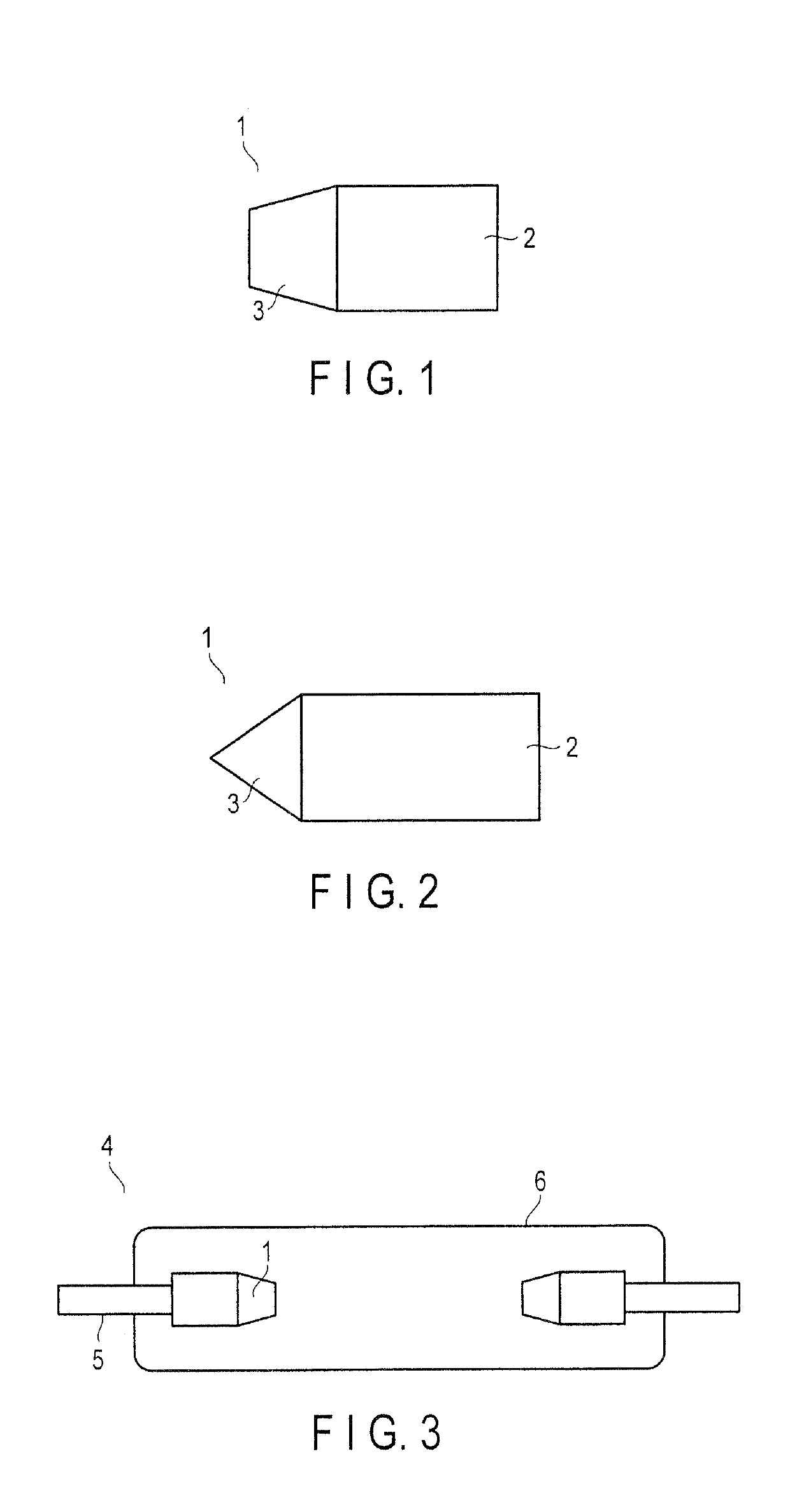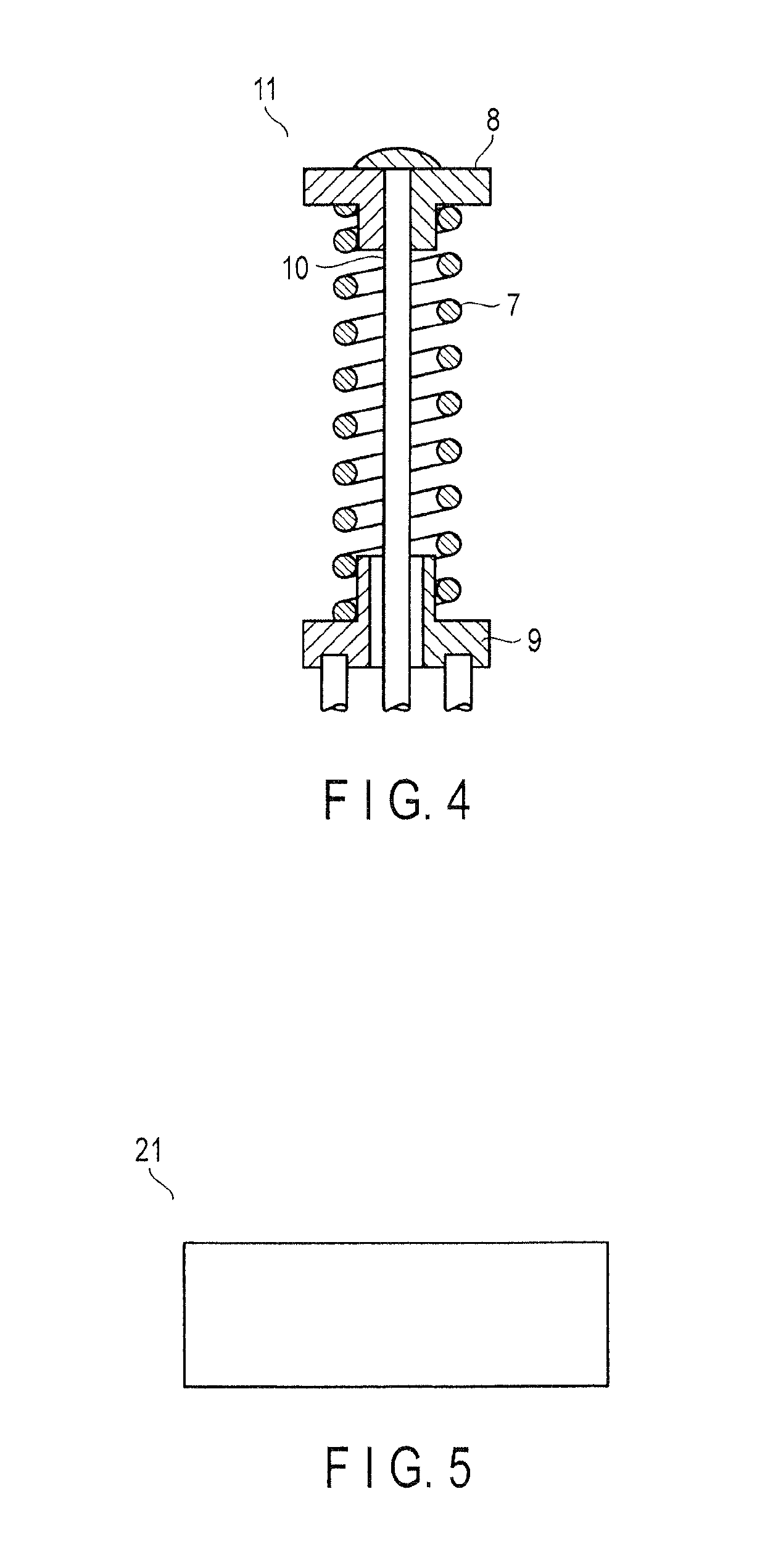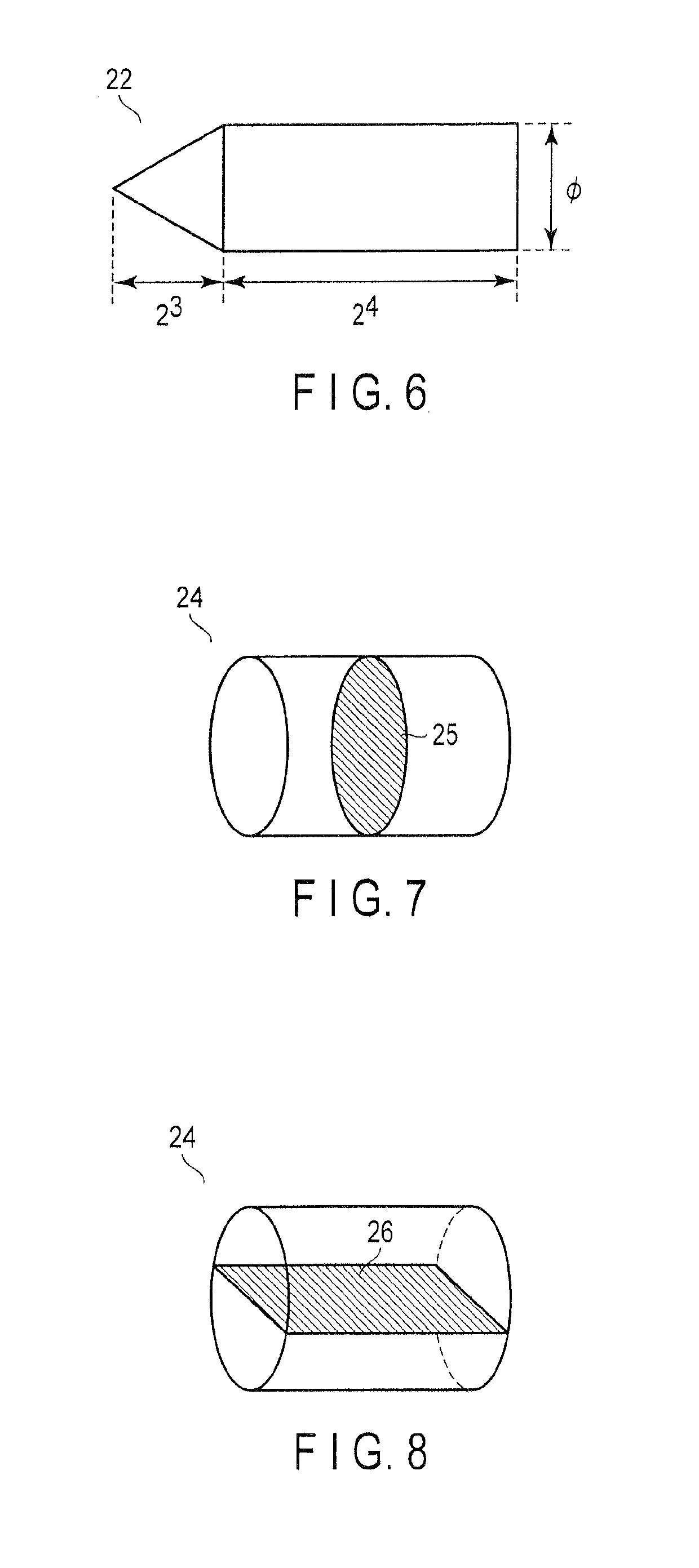Tungsten alloy part, and discharge lamp, transmitting tube, and magnetron using the same
- Summary
- Abstract
- Description
- Claims
- Application Information
AI Technical Summary
Benefits of technology
Problems solved by technology
Method used
Image
Examples
example 1
[0105]As raw powders, 2 wt % of ZrC powder (purity: 99.0%) having an average particle diameter of 2 μm was added to tungsten powder (purity: 99.99 wt %) having an average particle diameter of 4 μm. When the amount of Zr for the ZrC powder was defined as 100 parts by mass, the amount of impurity Hf was 0.8 parts by mass.
[0106]The raw powders were mixed in a ball mill for 30 hours, to prepare a mixed raw powder. Next, the mixed raw powder was put into a mold, to produce a molded body. The obtained molded body was subjected to electric sintering in a vacuum (10−3 Pa) at 1800° C. for 10 hours. A sintered body having a height of 16 mm, a width of 16 mm, and a length of 420 mm was obtained by the process.
[0107]Next, a cylindrical sample having a diameter of 2.4 mm and a length of 150 mm was cut out. The sample was subjected to centerless polishing processing, to set a surface roughness Ra to 5 μm or less. Next, a tip part was processed into a conic shape having an inclination angle of 45 ...
examples 2 to 5
[0113]Next, there were prepared raw mixed powders in which the addition amount of ZrC and the addition amount of K as a dope material were changed as shown in Table 2. The raw mixed powders were subjected to metal molding, and sintered in a vacuum (10−3 Pa or less) at 1500 to 1900° C. for 7 to 16 hours, to obtain sintered bodies. In Examples 2 and 3, a cutting-out process was performed under a condition where the size of the sintered body was the same as that of Example 1. In Examples 4 and 5, the sizes of the molded bodies were adjusted, to directly obtain sintered bodies having a diameter of 2.4 mm and a length of 150 mm.
[0114]Each of the samples was subjected to centerless polishing processing to set a surface roughness Ra to 5 μm or less. Next, a tip part was processed into a conic shape having an inclination angle of 45 degrees. Next, a stress relief heat treatment was performed in a vacuum (10−3 Pa or less) at 1400 to 1700° C. Thereby, discharge lamp cathode parts according to...
examples 21 to 25
[0123]Next, the same tungsten powder and ZrC powder as those in Example 12 were used, and a second component changed to a composition shown in Table 10 was prepared. These were subjected to furnace sintering at 2000° C. under a sintering condition of a hydrogen atmosphere, to obtain ingots. The ingots were processed at a processing ratio of 50%, to obtain electrode parts having a wire diameter of 10 mm. The electrode parts were subjected to a recrystallization heat treatment at 1600° C. in a hydrogen atmosphere. The same measurement was performed for each of Examples. The results were as shown in Tables 10 to 12.
TABLE 10Amount of Zr componentAddition component(in terms of ZrC, wt %)(material / wt %)Example 211.0K / 0.005Example 221.0Hf / 0.01Example 231.0Hf / 0.5Example 241.0HfC / 0.1Example 251.0Ta / 0.2
TABLE 11Tungsten crystal particle diameterZrC particlesTransverse sectionVertical sectionAverageMaximumMaximumRatioAverageAverageparticlediameter ofdiameter ofof 1 toparticleAverageRatio ofpart...
PUM
| Property | Measurement | Unit |
|---|---|---|
| Temperature | aaaaa | aaaaa |
| Temperature | aaaaa | aaaaa |
| Temperature | aaaaa | aaaaa |
Abstract
Description
Claims
Application Information
 Login to View More
Login to View More - R&D
- Intellectual Property
- Life Sciences
- Materials
- Tech Scout
- Unparalleled Data Quality
- Higher Quality Content
- 60% Fewer Hallucinations
Browse by: Latest US Patents, China's latest patents, Technical Efficacy Thesaurus, Application Domain, Technology Topic, Popular Technical Reports.
© 2025 PatSnap. All rights reserved.Legal|Privacy policy|Modern Slavery Act Transparency Statement|Sitemap|About US| Contact US: help@patsnap.com



